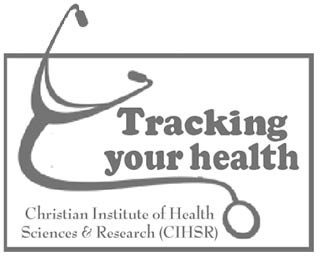
Avonuo Ziephrü
Dimapur
Health information management (HIM) is the practice of acquiring, analyzing, and protecting digital and traditional medical information vital to providing quality patient care. It is a combination of business, science, and information technology (AHIMA).
HIM professionals plays a key role in maintaining patient’s records to help the patient and physician in the continuity of patient’s care, better management of treatment, promotes research, takes care of financial and legal interest of patient, physician and hospital. The data collected by HIM professionals is very useful in planning and management of hospital, government policies and community care.
Having skilled HIM professionals on staffs ensure an organization/ institution has the right information on hand when and where it is needed while maintaining the highest standards of integrity, security and confidentiality.
HIM professionals also works on the classification of diseases and treatment to ensure they are standardized for clinical, financial and legal uses in healthcare.
Uses of Medical Records:
a. Patient Care Management
(i) Document the course of patient’s illness as an inpatient or outpatient.
(ii) Communication between the physician and other professionals contributing to patient care.
(iii) Provide continuity of care during subsequent visits/admissions of the patient.
b. Quality Review purposes
(i) Review, study and evaluate patient care by the health care facility.
c. Financial Reimbursement
(i) To provide data for the third parties concerned with the patient’s other physicians and health facilities, insurance companies, compensation carriers and government agencies.
d. Legal Affairs
(i) To provide data to assist in protecting the legal interest of the patient, the hospital and medical staff.
e. Education, Research and Public Health
(i) Provide clinical data for research, study and education.
Value of the Medical Record:
a) To the patient: The Medical Record serves as a reference for doctors describing the present and past state of health. Doctors cannot be expected to remember the details of each patient’s illness. When patient requires subsequent treatment with same illness with or without a change of doctor, the medical record will enable review of the previous course of treatment that will help doctors initiate treatment. Thus, the medical record serves as a reference.
b) To the health facility: The medical record is of value in evaluating the competency of the medical staff and results of treatment. It provides means of measuring whether or not the efforts of the physicians are in accordance with reasonable expectations of modern scientific medicine. Unless an accurate record is kept, neither the health care facility nor doctor can justify the results of treatment.
c) Education, Research and Public Health: In scientific research, case studies supply practical and reliable sources of material for the advancement of medical science. In addition, the medical record is valuable in teaching programs. It is the source document for medical facts related to the disease, treatment, care and results.
i. Education – Case studies
ii. Research – Provides data
iii. Public Health – identify disease incidence
d) In legal affairs: The medical record is essential for defense in malpractice suits. It also helps patients for legal claims.
e) Financial reimbursement: Medical records are the main source for any supporting document to claim for the service
f) To the physician: Information from the medical record is helpful to doctors caring for the patient during subsequent hospitalization and outpatient follow-up. The physician may also need the record for medico-legal purposes.
CONCLUSION: As summarized above on its various working aspects, it can be noted that HIM plays a crucial role in the management of integrity, confidentiality and legal functionaries toward both its patients and the healthcare professionals; providing vital information and statistics to further both the parties cause as well as their progression to better well-being and capacity respectively. And it may be a faux pas to state that a professional from this background is the need of the hour in the state of Nagaland. But the intention is to create the awareness among the population, especially those of the masses that leads hospitals and of those that can be heeded toward pursuing the course. Although, it may not be deemed a necessity to head toward this profession for the moment due to a greater unfamiliarity of its significance, it is only best for those that are equipped with the knowledge and the passion for promoting better healthcare systems in the state of Nagaland to join hands in pioneering for quality and merited hospitals across the region. As this will not only enhance the patient care aspect of the state but will also serve as an efficient oasis of information for other medical professionals in and outside the region in their search of the medical sciences pertaining to the environment.
(Extract from Health Information Management, AHIMA: American Health Information Management Association.)
The writer is Junior Hospital Information Management Officer, Hospital Information Management Department, CIHSR, Dimapur.






